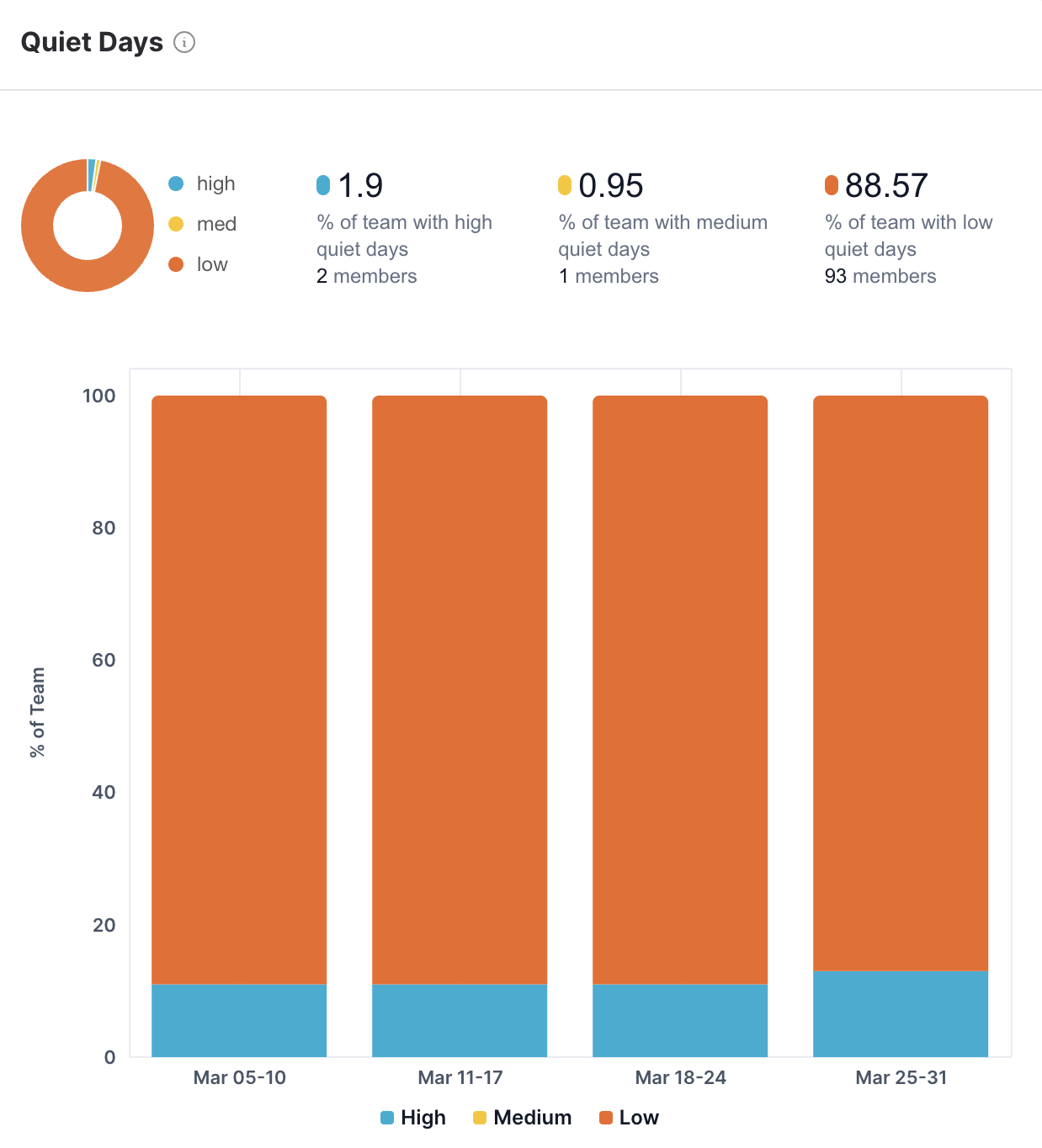Quiet Days
Quite Days are days having no significant work outside work hours.
Significant work is defined as:
- >10m of meetings
- >0 PR reviews
- >0 PR updates.
For teams, this metric represents the percentage of team members who have highly quiet days in the selected time period. For individuals, this metric represents the percentage of days that are highly quiet.

Computation of the metric
- A standard 9-hour working day and 5-day work-week (Mon-Fri) is assumed.
- Calendar data, including meetings and appointments, is gathered to identify scheduled activities outside work hours.
- The duration of each meeting is determined; those surpassing 10 minutes are identified as significant work.
- Pull Requests (PRs) created or updated outside the defined work hours are assessed from version control systems.
- Relevant digital actions (e.g., code commits, document edits) outside work hours are tracked using online activity logs.
- Days without significant work outside work hours are recognized based on criteria such as no meetings exceeding 10 minutes, and no PR review or update.
- The percentage of team members (for teams) or days (for individuals) meeting the criteria for highly quiet days is computed.
Industry benchmarks
- High Quiet days: If you’ve had meetings outside of work hours for <20% of your work days, it’s classified as high quiet days.
- Medium Quiet days: If you’ve had meetings outside of work hours for >20% and <30% of your work days, it’s classified as medium quiet days.
- Low Quiet days: If you’ve had meetings outside of work hours for >30% of your work days, it’s classified as low quiet days.
Dashboards where this metric is used
- Dev Summary Dashboard
- Dev Metric grid Dashboard
- Team Well-being Dashboard
Use cases of this metric
- Look for teams & team members with sustained significant work outside of working hours as a signal of potential burnout
- It helps you identify the burnout risk among the team members.
- Gives an actual picture of number of hours spent by team members outside office hours. This can act as a great way to incentivise your people.
- Realign work load among the teams/ members.
- Take more informed decisions and take better care of your employee’s physical and mental health.
- Helps improve attrition rate over a period of time.